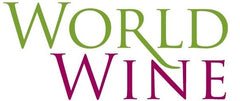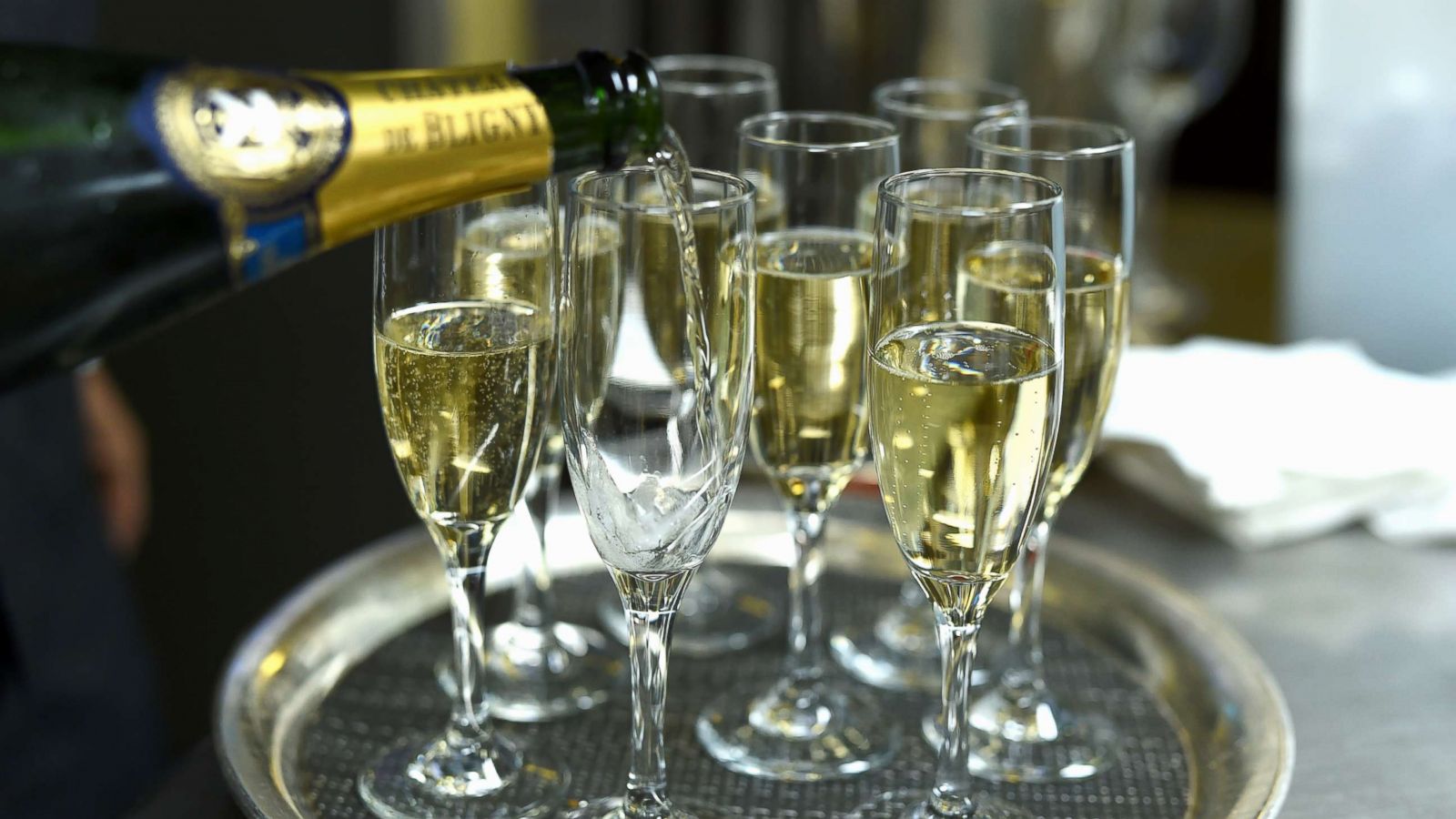Sparkling wine is not only festive and suitable for memorable occasions, but it’s also incredibly versatile and great with food. There’s no doubt having at least a bottle of fizzy wine in the fridge can come in handy.
Of course, knowing all there is about sparkling wine helps, too. After all, like any other wine style, sparkling wine has its secrets. No two bottles are the same and knowing the difference between them pays off.
Here’s our guide to sparkling wine: everything there is to know about sparkling wine, from its styles and sweetness levels to the best sparkling wine out there. The best part about sparkling wine is that there’s no right or wrong choice; every bottle of fizz is charming! Pour yourself a glass of bubbles and let’s get started. This is the ultimate guide to sparkling wine. Cheers!
What Is Sparkling Wine?
Sparkling wine starts its life as ordinary white wine, but not quite. The base wines used to make fizzy wine are highly acidic and would probably be hard to drink if bottled as is. This acidity is critical for the style, and it’s partially responsible for sparkling wine’s age-worthiness and compatibility with food.
After the winemakers harvest the fruit, whether it’s red or white grapes, they press it to get a clear juice, ferment it to driness and turn it into sparkling wine. There are several methods to add carbonation to wine. The easiest way is infusing the wine with CO2, which produces inexpensive and not remarkably interesting wines.
There are two more exciting sparking winemaking methods, the Italian and the Champenoise. In both, winemakers add extra yeast to the wine and allow it to re-ferment. This time, without allowing the carbon dioxide generated from fermentation to escape, which becomes the fine bubbles later released from the wine.
Sparkling wine is often made with Chardonnay and Pinot Noir, and in the case of Prosecco, Glera. Still, winemakers worldwide craft fizzy wine with every grape imaginable.
Types of Sparkling Wine
The most acclaimed type of sparkling wine is made with the Champenoise method. Here, the base wine ferments a second time in bottle, in a pain-stalking and labour-intensive process that can take years, if not decades. French Champagne is a beautiful example of the category, but there are others. Cava is another example of this wine style.
A second meaningful type of sparkling wine is made with the Italian method or Charmat, in which the base wine re-ferments, this time in a temperature-controlled, pressure-tight stainless-steel tank. The process is much faster than the one used in Champagne, but the result is not as complex or sophisticated. Prosecco and Asti are notable examples of the category.
The fundamental difference between sparkling wine made with the Champenoise method and those made in a tank is that wines made with the Italian way are fruit-forward. Those re-fermented in bottle offer more secondary and tertiary aromas, proper of extended ageing over the spent yeast or lees.
Sparkling Wine’s Sweetness Levels
No matter the method used to make sparkling wine, most producers worldwide use the same sweetness scale to label their wines. Even the driest Champagnes have at least a hint of sugar, necessary to balance the wine’s naturally high acidity.
Extra Brut and Brut Nature
These sparkling wines have little to no sugar added. They’re more than dry; they can be tart. The wine can have between 0-6 grams of sugar per litre, which is extremely low.
Brut
This is the most common sweetness level for sparkling wine. Brut sparkling wine can have less than 12 grams of sugar — the wines aren’t perceived as sweet on the palate, though, but round and pleasing.
Extra Sec / Extra Dry
With extra sec sparkling wine, our palates notice some sweetness. These wines can have between 12-17 grams of sugar per litre; although not nearly as sweet as dessert wines, they’re quite pleasing.
Dry / Sec
Sparkling wine with between 17-32 grams of sugar per litre. You can also find these labelled as trocken, seco or secco. Here, dry means sweet.
Demi-Sec
Sweet sparkling wines with between 32-50 grams of sugar per litre. These are noticeably sweet and are best paired with mild desserts. You can find them labelled as semi seco or halbtrocken.
Doux
Wines with over 50 grams of sugar per litre. Producers can label these as dolce or sweet. These are increasingly rare, but some examples exist.
Countries Known for Sparkling Wine
Although French and Italian sparkling wines are amongst the most popular globally, nearly every wine-producing country makes sparkling wine; here are a few sources of fine bubbles from around the world.
England is a relative newcomer to the wine scene. Southern England’s cold climate and chalky soils are ideal for making wine Champagne-style. The quality is better every year.
New Zealand is one of the southernmost wine-producing countries globally and has a suitable climate for world-class sparkling wine, particularly on the southern island.
South Africa has deep sparkling winemaking traditions. Their wine is produced with the Champagne method and is labelled as Cape Classique.
Australia produces sparkling wine, mainly in its coldest viticultural areas, including Tumbarumba in the Great Dividing Range and Tasmania. Winemakers in South Australia make an intriguing Sparkling Shiraz as well.
The United States is home to several cold wine regions, and a few Maisons de Champagne have established operations in the country, particularly in Northern California.
Does Sparkling Wine Go Off?
Sparkling wine, mainly made with the slow Champenoise method, is incredibly age worthy. The pressure inside the bottle keeps oxygen at bay, wine’s most dangerous enemy. At the same time, the high acidity in most sparkling wines makes them less prone to bacterial contamination. Sparkling wine can age for decades if stored in the right conditions. In fact, it’s not uncommon for Champagne Houses to release some of their most illustrious labels after decades of ageing in the winery’s underground cellars.
Once opened, sparkling wine has a brief life. Just like white wine, it will decay in a couple of days, and there’s little you can do about it. The good news is that, more often than not, having leftover sparkling wine is unusual.
How to Store Sparkling Wine?
Store unopened bottles of sparkling wine in a dark place, away from direct sunlight, heat sources or vibration. The best temperature to store sparkling wine is 10°C, which is also an ideal serving temperature, especially for Champagne-method wines.
For short term storage of up to a few weeks, storing sparkling wine in the refrigerator is not a bad idea. Fridge temperature (4°C) is suitable for serving Italian method sparkling wines, as they have more straightforward bouquets best enjoyed at colder temperatures.
Is Sparkling Wine Served Chilled?
Yes, serve sparkling wine at 4°C (fridge temp.) if it’s not too complex, and closer to 10°C if expressive. Keep your opened bottles of wine in an ice bucket filled with equal parts ice water and ice during service.
Store opened bottles of sparkling wine in the fridge, not in the door compartments (which aren’t as cold) but on the top shelf, all the way in the back. Use a proper seal to prevent the wine’s carbonation from dissipating.
How to Close a Sparkling Wine Bottle?
The best way to seal an opened bottle of sparkling wine is with a specialised bottle stopper, which has clamps that prevent the pressure in the bottle from popping out the stopper.
Sparkling wine bottle stoppers are readily available and can be reused indefinitely. Pumping the air out of the bottle before sealing is unnecessary with sparkling wine, as the gas itself pushes the air out, effectively taking its place.
Sparkling Wine To Try
Although every bottle of sparkling wine guarantees a good time, some represent the category’s distinct wine styles beautifully. Choose sparkling wine from our global collection or try any bottle from the selection below.
Umberto Luigi Domenico Prosecco DOC ‘Extra Dry’ NV
A dry, crisp and elegant Prosecco made with the traditional Glera variety. Peaches, citrus and mineral undertones make this zesty wine a charming aperitivo.
Heidsieck Monopole Gold Top Champagne
The finest Champagne is made with grapes from a single vintage, and although vintage Champagne is often expensive, this extraordinary example by Heidsieck isn’t. Creamy, nutty and nothing less than decadent, this is Champagne at its purest expression.
42 Degrees South Premier Cuvee Sparkling NV
Tasmania is gaining recognition for its premium-quality sparkling wines at a fair price, and 42 Degrees South is a splendid example. This Pinot Noir - Chardonnay wine has zesty lemon and apples on the nose over a smooth, bready palate.
Make sparkling wine part of your life!
Sparkling wine is delightful year-round, and no it’s not reserved for special occasions. Opening a bottle of fizz is a special occasion in its own right! Always have a few bottles of fizz ready to go and surprise your guests with the unique personality of the finest sparklers in the world.

